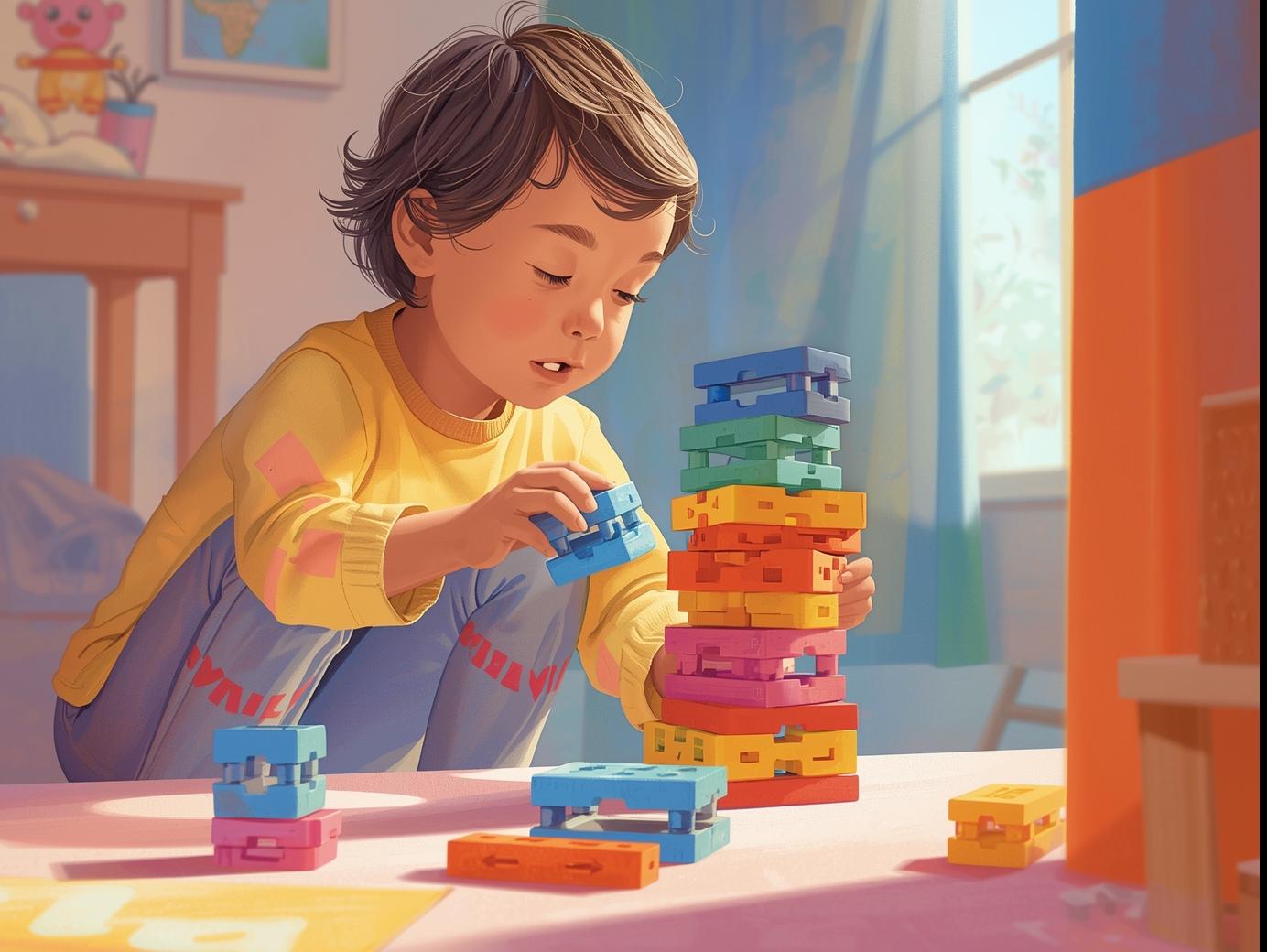Tourettic OCD in children
Tourettic OCD in children is a complex condition that combines elements of Tourette’s Syndrome and Obsessive-Compulsive Disorder (OCD). It manifests through a combination of motor or vocal tics and compulsive thoughts and actions, posing challenges for families and even healthcare professionals to fully grasp. The term “Tourettic OCD in children” is crucial as it emphasizes a specific struggle that is distinct from simply having tics or OCD on their own, representing a unique interaction of both disorders. When a child experiences Tourettic OCD, they face overwhelming urges and impulses followed by rituals or compulsions intended to mitigate anxiety or prevent negative outcomes. These experiences are not chosen by the child; instead, they are caught in a cycle of intrusive thoughts, uncomfortable sensations, and repetitive actions that may provide temporary relief but ultimately lead to greater distress.
Tourettic OCD in children often features overlapping symptoms. For instance, a child might feel a strong sensory urge that compels them to perform a tic-like action repetitively until it feels right, simultaneously battling obsessive fears that something terrible will happen if they fail to perform it correctly. This blending of tics and compulsions underscores the complexity of Tourettic OCD: to an observer, the child’s behaviors might resemble typical Tourette’s tics, yet they are driven by obsessive anxieties. As a result, the child may feel exhausted, misunderstood, and ashamed. Parents might perceive these behaviors as mere habits or attention-seeking, while teachers may consider them disruptive, overlooking the internal struggle the child faces that is beyond their control.
SYMPTOMS OF TOURETTIC OCD IN CHILDREN
The symptoms of Tourettic OCD in children encompass both physiological and psychological dimensions.
Physiological aspects: can include muscle tension, rapid blinking, head jerks, throat clearing, or other tic-like actions, often preceded by uncomfortable sensations known as premonitory urges, which intensify until the tic is executed.
Psychological aspects: symptoms commonly associated with classic OCD arise, such as intrusive thoughts, compulsive rituals, perfectionism, excessive guilt, and heightened anxiety levels. Many children report an unbearable internal pressure that can only be relieved through movement or ritualistic behavior. Over time, this cycle can lead to headaches, fatigue, sleep disturbances, stomach issues, irritability, and challenges in concentrating at school.
Emotional symptoms: often involve shame, frustration, and sadness due to the inability to control these behaviors or the potential for social exclusion.
TYPES OF TOURETTIC OCD IN CHILDREN
Tourettic OCD in children manifests in various ways. Some children may exhibit tic-like compulsions, where the distinction between a motor tic and a compulsion becomes unclear. Others may demonstrate symmetry compulsions, needing to perform actions until they feel perfect. There can also be an overlap between vocal tics and compulsive speech rituals, such as repeating specific words to avert harm. For some children, the obsessive aspect may be more pronounced, driven by fears of contamination, harm, or moral dilemmas, while for others, sensory urges and motor tics might take precedence. These manifestations can evolve over time, with new tics or compulsions emerging while old ones diminish, further complicating the child’s experience and heightening their distress.
ORIGINS OF TOURETTIC OCD IN CHILDREN
The origins of Tourettic OCD in children stem from a combination of psychological, social, and environmental factors.
Psychological factors: kids who experience high levels of anxiety sensitivity, perfectionism, and challenges in coping with uncertainty are more susceptible to these issues. They tend to assume catastrophic significance to their urges or thoughts, which heightens the compulsion to act.
Social factors: family dynamics can exacerbate symptoms, whether through enabling, excessive protection, or punishment, while peers might tease or exclude a child whose behavior appears odd.
Environmental factors: like school changes, family conflicts, or academic demands can worsen symptoms.
TREATMENT OF TOURETTIC OCD IN CHILDREN
Diagnosing Tourettic OCD in children necessitates a thorough evaluation to differentiate between tics, compulsions, and their interactions. While tics in Tourette’s are generally short and involuntary, compulsions in OCD involve repetitive actions prompted by intrusive fears. In Tourettic OCD in children, it is common for behaviors to encompass both tics and compulsions, leading to potential misdiagnosis. Competent clinicians consider not only the child’s physical movements and vocalizations but also their mental experiences, including any intrusive thoughts or premonitory urges linked to these behaviors. Parents often feel relieved upon receiving an accurate diagnosis, as this recasts the child’s challenges from misbehavior to symptoms of a manageable condition.
Treatment for Tourettic OCD in children involves a multifaceted approach that blends therapy, wellness practices, and family involvement.
Cognitive Behavioral Therapy (CBT): is central to this treatment, as it guides children in recognizing distorted thoughts and minimizing the catastrophic interpretations associated with their urges and rituals. Therapists use age-appropriate methods to help children shift their thinking, such as understanding that not performing a tic or ritual won’t actually result in harm. CBT typically includes psychoeducation, equipping children and their parents with a solid understanding of the disorder while alleviating feelings of shame.
Exposure and Response Prevention (ERP): ERP encourages children to confront their intrusive fears or urges without succumbing to the compulsive rituals they typically feel compelled to perform. For example, if a child believes they must blink a certain number of times to avert disaster, ERP would involve practicing resisting or postponing the blink, allowing the anxiety or discomfort to peak and then subside naturally. Over time, this helps the child recognize that no catastrophic outcomes follow, weakening the cycle of urge and compulsion. In the context of Tourettic OCD, ERP must be thoughtfully tailored to address the fusion of tics and compulsions, but when implemented gradually and supportively, it significantly alleviates distress.
Acceptance and Commitment Therapy (ACT): introduces a significant enhancement to treatment. It emphasizes altering the way children relate to their thoughts and impulses rather than merely striving to eliminate tics or compulsions. Through ACT, children learn to recognize their urges non-judgmentally, engage in mindfulness, and commit to actions that reflect their values, such as enjoying time with friends or concentrating on school, rather than becoming consumed in OCD rituals. For children with Tourettic OCD, this transformation is empowering; they start to view themselves as more than just their symptoms and understand that they can live fulfilling lives even amid discomfort.
Wellness coaching: supports this approach by integrating recovery into a holistic lifestyle philosophy. Children are encouraged to cultivate healthy habits that enhance emotional resilience, including maintaining consistent sleep patterns, eating a balanced diet, engaging in regular physical activity, and practicing relaxation techniques. These routines help stabilize brain and body systems, lower baseline stress, and increase the effectiveness of therapy. Additionally, wellness coaching encourages families to adopt a positive outlook on life, focusing on growth, balance, and overall well-being, rather than fixating on symptoms. When children learn to see themselves in a holistic manner, they build confidence and feel less defined by their disorders.
Incorporating personality dynamics: into treatment can provide a deeper understanding of the child’s internal landscape. By recognizing traits such as sensitivity, perfectionism, guilt, or impulsivity, therapy can be customized to match the child’s temperament. Courses on personality dynamics or psychoeducational resources for families can foster empathy and offer practical strategies. Instead of viewing these traits as shortcomings, families can reframe them as elements of the child’s personality that, when understood and managed effectively, can give rise to strengths like empathy, creativity, or determination.
Building healthy coping strategies: is crucial for long-term success. Children are taught alternatives to compulsive behaviors, such as grounding techniques, deep breathing exercises, mindfulness, or journaling. Schools can play a supportive role by creating environments where children can practice these coping skills instead of facing punishment for their symptoms. Over time, children learn to manage their urges without succumbing to them, which enhances their self-control and emotional resilience.
Improving emotional and mental health: Therapy serves not only to alleviate symptoms but also to establish a strong base of self-esteem, emotional understanding, and social abilities. Family therapy aids in minimizing conflicts and adjustments while equipping parents with techniques to respond calmly and consistently. Peer support and psychoeducation help diminish stigma and feelings of isolation, fostering a sense of acceptance among children. By nurturing resilience, therapy allows children with Tourettic OCD to excel in academic and personal relationships.
The outlook for Tourettic OCD in children is promising when interventions are implemented early, thoroughly, and with empathy. The right blend of CBT, ERP, ACT, wellness coaching, personality insights, coping strategies, and emotional growth can lead to substantial improvement. Children learn to not only manage symptoms but also to build resilience, establish their identity, and find meaning in their lives. Families, schools, and communities are essential in providing acceptance, structure, and encouragement.
FAQ
- How is Tourettic OCD different from Tourette’s syndrome or OCD alone?
While Tourette’s syndrome involves involuntary tics and OCD involves obsessions and compulsions, Tourettic OCD is a hybrid. It often shows up as complex motor or vocal behaviors that are partly tic-like but also connected to obsessive fears or compulsive urges.
- Can stress or trauma make Tourettic OCD worse?
Yes. Stressful life events, bullying, sudden changes, or family stress often intensify symptoms. Children may experience stronger urges, more frequent tics, and heightened compulsions during difficult times.
- How can parents support a child with Tourettic OCD?
Parents should respond calmly, avoid punishing or mocking tics, and reduce family accommodation of compulsions. Encouraging coping strategies, supporting therapy exercises, and maintaining structured routines at home helps the child feel safer and more in control.
- Can children grow out of Tourettic OCD?
While symptoms may change with age, most children do not simply grow out of it. With timely therapy, emotional support, and healthy coping skills, symptoms can greatly improve, and children can learn to manage their condition effectively.
- What are the main symptoms of Tourettic OCD in children?
Symptoms include repetitive touching, blinking, tapping, throat clearing, repeating phrases, or doing actions until they feel “just right.” Children may also have intrusive thoughts and perform rituals to neutralize them. Anxiety, restlessness, and physical tension are common.
16 step process of OCD Recovery and Cure Program
1. Initial interaction via call or WhatsApp to know the client’s OCD scenario & willingness of recovery mindset.
2. The first consultation aims to understand the client’s OCD patterns, subtype, complexity, severity.
3. A comprehensive psychological assessment covering the OCD spectrum, emotional and mental health, personality dynamics, quality of life, functional analysis, unconscious mind processing, and present complexity as hidden motives, drives, needs, dominant emotions, and other qualitative & quantitative check. .
4. Development of a clear problem statement by the client, followed by a family feedback session to collect inputs and the client’s OCD-related challenges.
5. Creating and developing a structured work plan with defined goals and a clear timeline.
6. Initiation Therapy Foundation Course (6 days)
7. A. Customized CBT and ERP one-on-one sessions conducted daily from Monday to Friday as part of the therapeutic intervention, over a duration of 4 to 6 months.
7. B. Weekly family sessions conducted every Saturday throughout the course of the treatment.
8. Ongoing weekly and monthly progress reviews to assess development & treatment adjustment if needed.
9. Midterm evaluation in the 3rd month to assess progress and compare with expected initial projected outcomes in the initial phase.
10. Course correction in personality dynamics, with focused work on improving mental health and enhancing emotional well-being in the fourth month.
11. Relapse management focused on building resilience against the obsessional patterns that were primary challenges at the beginning of the program.
12. End-term evaluation to ensure all recovery milestones have been achieved and to assess overall treatment outcomes.
13. Final declaration of OCD recovery through a three-layer validation process involving the therapist, the client’s family, and a comprehensive psychological assessment.
14. Post-recovery follow-up sessions conducted weekly on Saturdays for a duration of 6 months to ensure sustained progress and prevent relapse.
15. Guiding throughout the 6-month follow-up to ensure the client remains stable and receives the necessary assistance to prevent 0% relapse.
16. Reaching a cured state by successfully completing 6 months of weekly follow-ups and maintaining OCD recovery, leading to the final declaration of OCD cure—marked by a 360° validation from all stakeholders, including the therapist, family, and psychological assessments.
CONCLUSION
In summary, Tourettic OCD in children is a complex yet treatable condition that combines tics and compulsive behaviors in a distinct manner. Understanding its physiological and psychological symptoms, origins, and effects allows for empathetic recognition and effective treatment. Through appropriate therapies and lifestyle support, children can transition from lives dominated by compulsions to ones characterized by resilience, creativity, and connection. When families respond with patience, empathy, and a commitment to holistic care, children with Tourettic OCD have the opportunity to not just cope with their symptoms but to thrive as confident and capable individuals.


